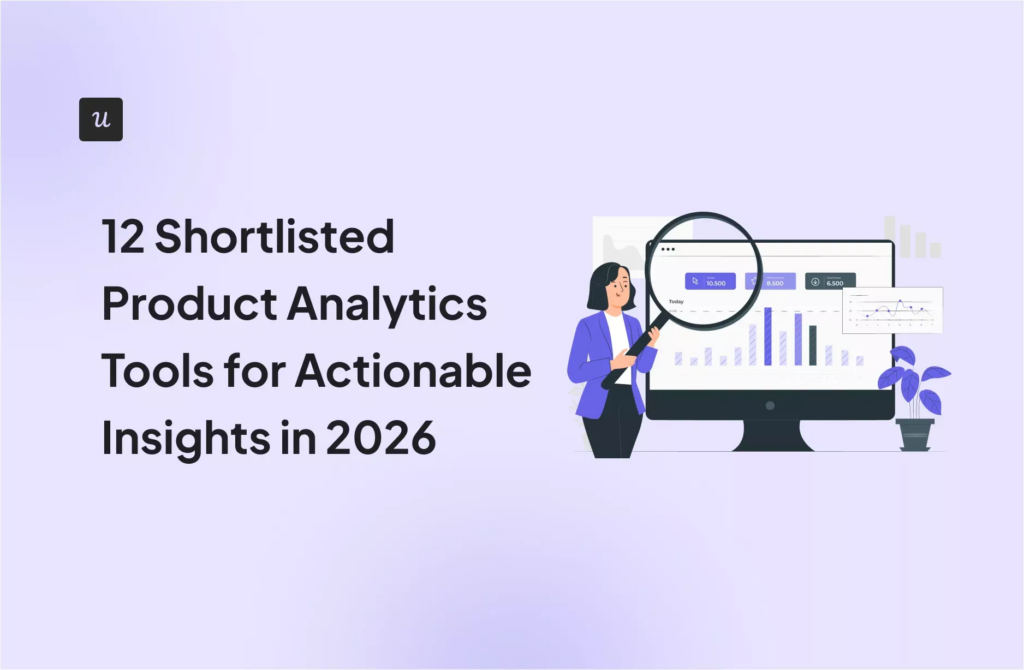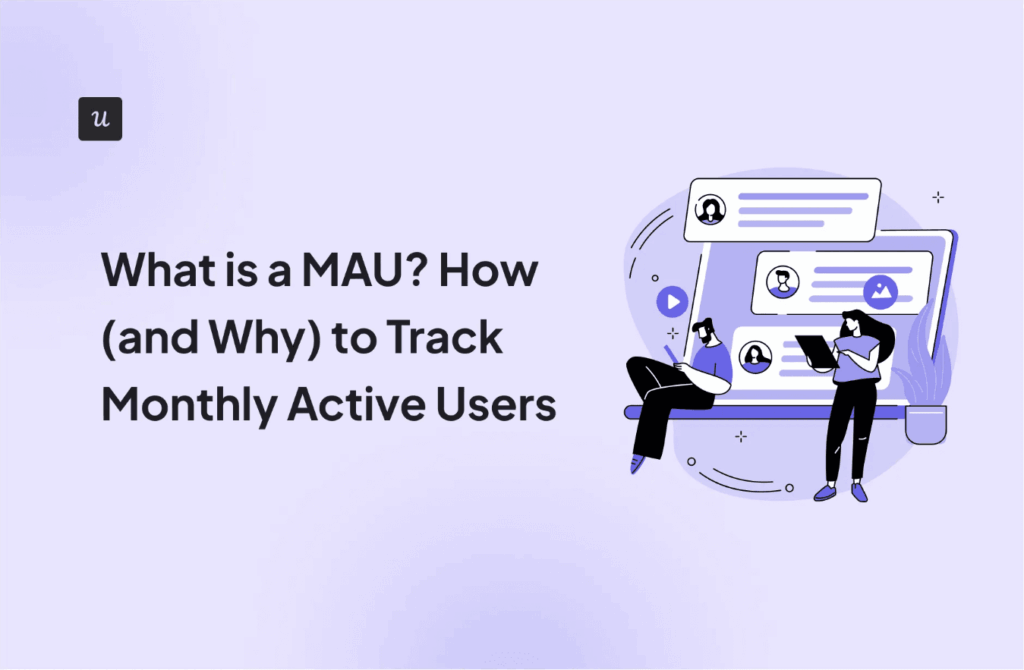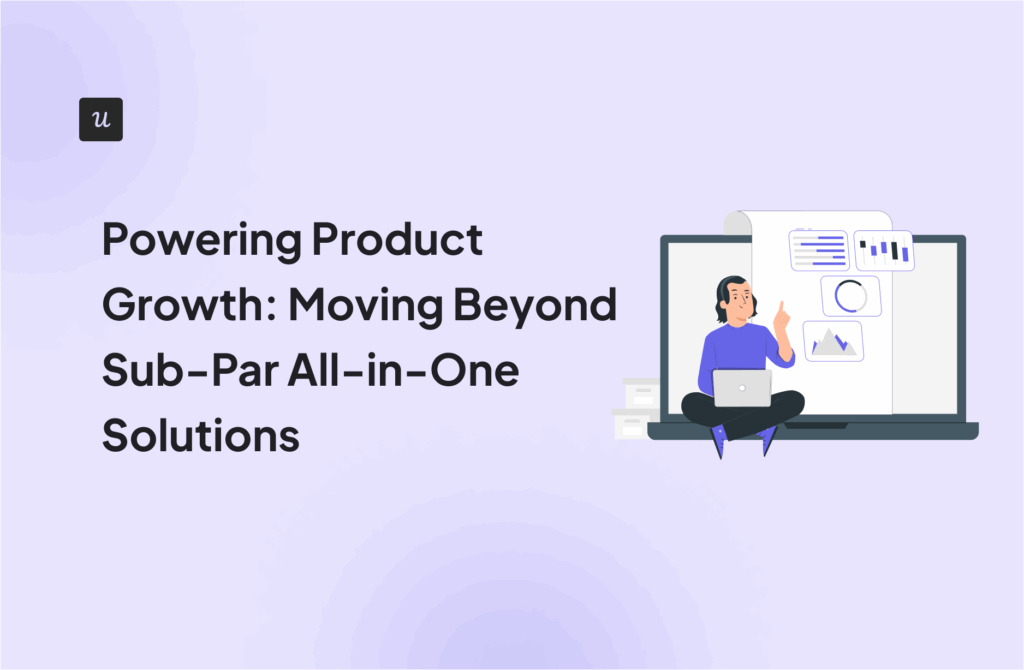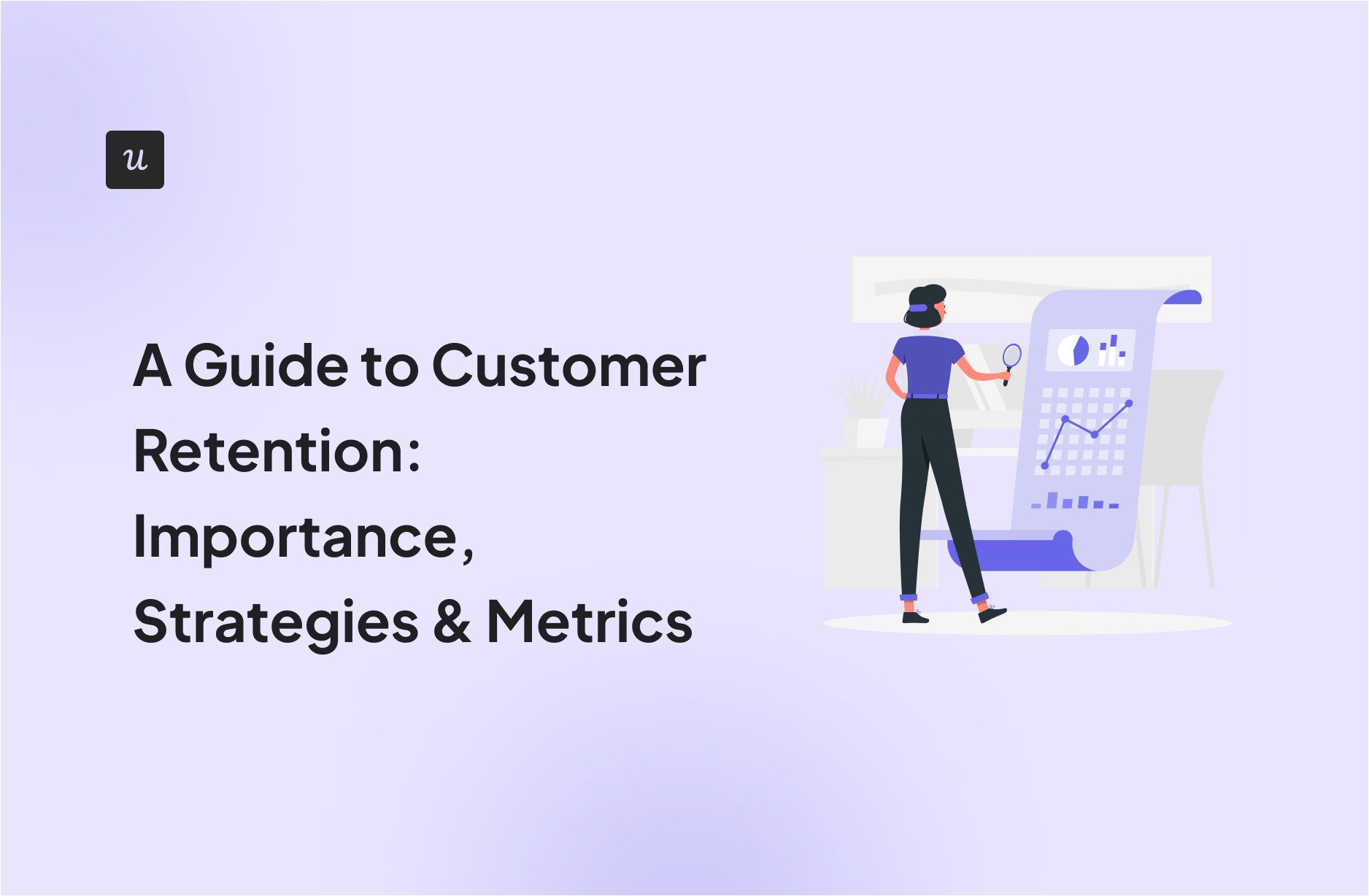
Customer retention is vital for product success and business profitability.
Why? That’s one question we discuss in the article.
You will also learn how to build a retention strategy, what metrics to track, and 10 bulletproof retention tactics for SaaS companies.
Let’s dive right in!
How are you currently measuring customer retention?
What’s your biggest challenge in improving your customer retention strategy?
How do you collect and act on customer feedback?
It’s time to build a proactive customer retention strategy.
Userpilot can help you understand user behavior, deliver personalized in-app experiences, and gather contextual feedback to reduce churn and increase loyalty.
Try Userpilot Now
See Why 1,000+ Teams Choose Userpilot

What is customer retention?
Customer retention is the ability of a SaaS company to keep its existing customers subscribed to and actively using its software products over an extended period.
To increase customer retention, businesses use tactics aimed at improving customer satisfaction and strengthening their loyalty, like personalization and tight feedback loops.
Why is customer retention important?
SaaS companies rely on recurring subscription revenue from customers rather than one-time sales. High customer retention means the revenue growth compounds over time as you grow your customer base.
The revenue is more predictable, too. This makes planning and budgeting easier and has a long-term impact on growth and innovation.
Moreover, retaining existing customers is more cost-effective than acquiring new ones. 5-25 times. What’s more, existing customers are more likely to buy new products or services than new leads (through upsells and cross-sells).
Loyal customers can also help you acquire new leads via word-of-mouth. Many marketers believe it’s the best marketing channel.
Key metrics to measure customer retention
Above, I’ve mentioned a few metrics relevant to customer retention. Let’s look at them in more detail.
Customer retention rate
Customer retention rate is the percentage of current customers who continue using the product over a specific period, like a month or year.
As a major retention metric, it tells you how effective your retention strategy is.
To calculate CTR, subtract the newly acquired customers from those at the end of the period. Divide it by the total number of users at the beginning of the period, and multiply it by 100.
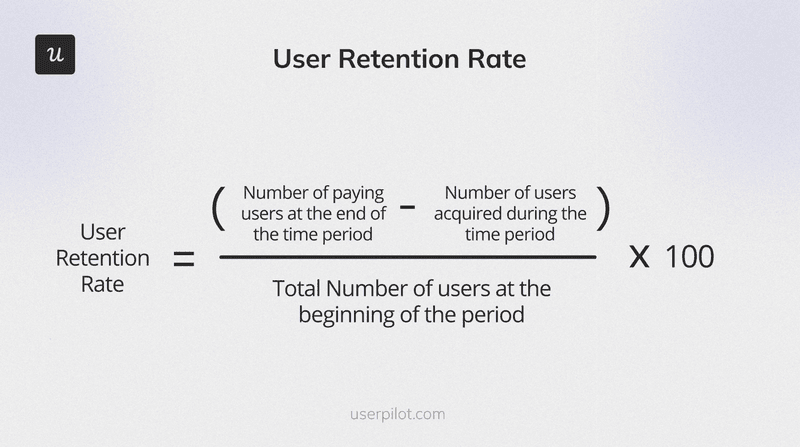
Customer retention metrics: Retention rate.
For example, if you had 10000 customers at the beginning, acquired 3000, and lost 1500, the CRR is 85%:
((11500-3000)/10000) x 100 = 85%
Customer churn rate
Churn rate is the percentage of customers who discontinue using your product within a given period.
To calculate the customer churn rate, divide the number of customers lost during a specific period by the total number of customers at the beginning of that period, and multiply by 100.
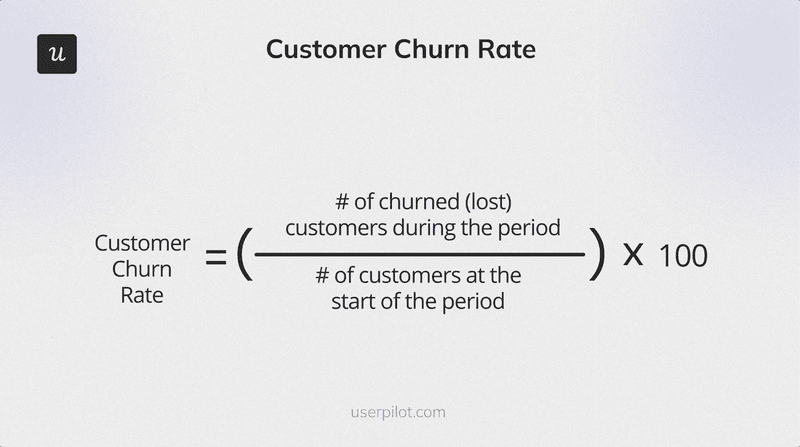
For example, if you started with 5,000 customers and lost 200 over a quarter, your customer churn rate would be:
((200 / 5,000) x 100) = 4%
A high churn rate indicates that customers are dissatisfied with the product.
Customer acquisition cost
Customer Acquisition Cost (CAC) is the total cost associated with acquiring a new customer. It includes expenses related to marketing, advertising, sales, and other efforts to attract and convert potential customers.
To calculate CAC, divide the total costs of acquiring new customers during a specific period by the number of new customers acquired during that same period.
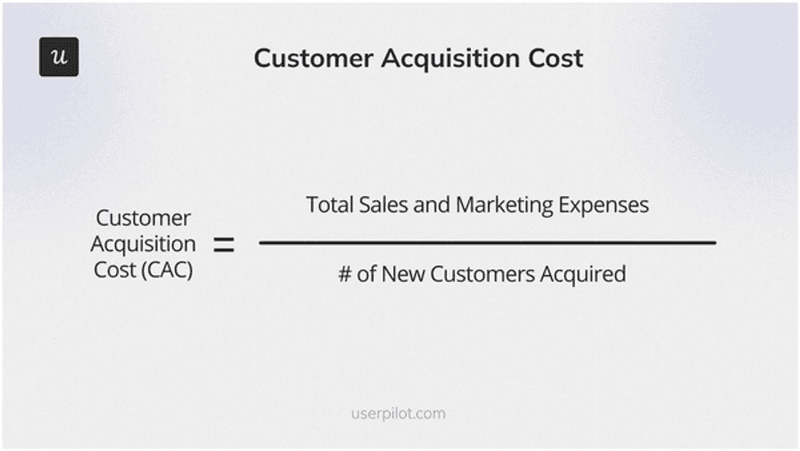
For instance, if you spent $50,000 on marketing and sales activities and acquired 500 new customers, your CAC would be:
$50,000 / 500 = $100 per customer
Your goal is to lower CAC. However, the metric alone doesn’t always give you a complete picture. Always consider it in the context of customer lifetime value.
Customer lifetime value
Customer Lifetime Value (LTV) is the projected revenue that an average customer will generate for a company over the entire duration of their relationship with the business.
To calculate LTV, multiply the average estimated customer value by the average customer lifespan.
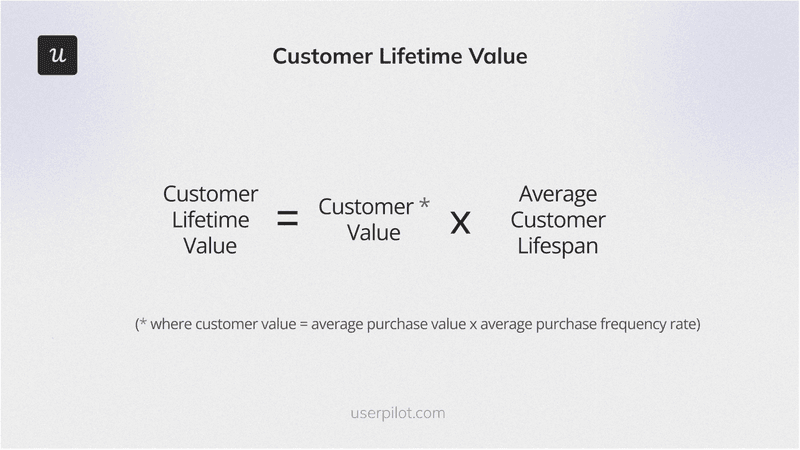
For example, if the average customer spends $50 per month, the average lifespan is 2 years (24 months), the LTV would be:
$50 x 24= $120
A higher LTV indicates that customers are more valuable to the company. Unless your acquisition cost is considerably higher. Aim for the LTV:CAC of 3:1.
Customer effort score
Customer effort score (CES) is a metric that measures the perceived effort a customer has to make to complete an action.
To calculate CES, ask customers a question like “How easy was it to complete this task?” on a scale of “Very Easy” to “Very Hard.”
CES is the percentage of customers who respond with a high effort score (e.g., 4 or 5 on a 5-point scale).
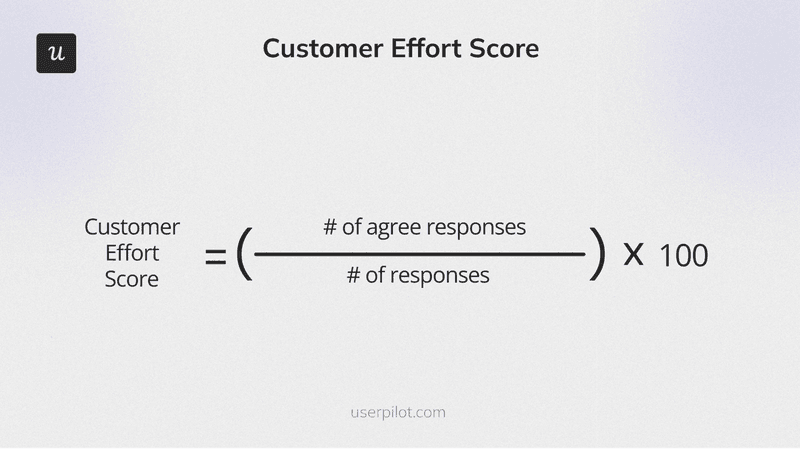
A low CES indicates that customers your product is user-friendly and intuitive. This is key to higher satisfaction and loyalty.
How to create a customer retention strategy?
Here’s our step-by-step guide to building a robust customer retention program.
- Set clear and measurable goals for customer retention, like target retention rate or customer lifetime value (CLV). They will serve as benchmarks to measure the success of your retention strategy.
- Gather insights about your customers, including their behavior, needs, and pain points. To identify the key customer satisfaction and loyalty drivers.
- Analyze your customer data to identify the primary reasons why customers churn or cancel their subscriptions. Like poor product experience or lack of perceived value.
- Implement strategies to address the root causes of churn and improve customer experience. For example, contextual in-app guidance.
- Track your retention metrics to identify areas for improvement and continuously optimize your retention strategy.
10 examples of customer retention strategies to boost customer loyalty and satisfaction
How can you improve customer satisfaction and turn new signups into loyal users? Here are 10 tactics to try.
1. Create personalized customer experiences for new customers acquired
Personalization enables customers to achieve their goals in less time and gives them a positive experience. And it makes users feel understood and valued.
For example, a personalized onboarding flow guides users only through the functionality relevant to their use cases. It’s quicker and less overwhelming or distracting.
To personalize customer experiences, use welcome surveys to segment users based on their JTBDs.
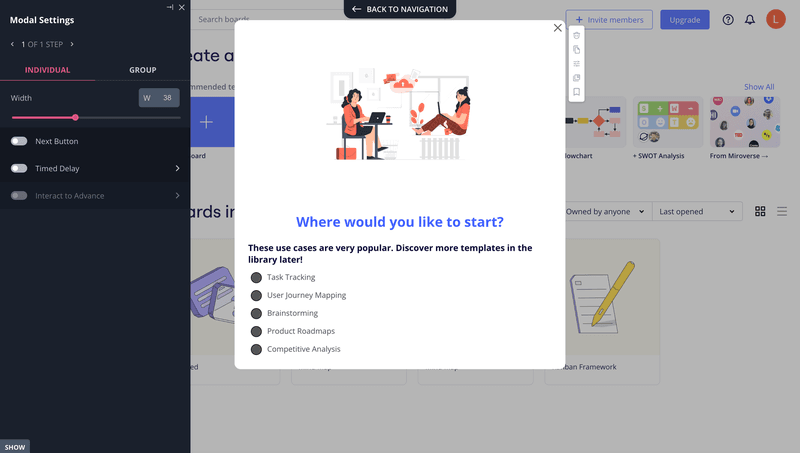
Next, trigger relevant experiences for specific user segments. Use user behavior analytics to constantly refine the experiences. So that they better address unique user needs.

2. Improve customer support quality with training materials
To improve customer retention, invest in their education.
Training materials help users understand how to use the product to achieve their goals. This increases their chances of success. Which leads to higher satisfaction levels and increased loyalty.
In your customer education strategy, deliver content in various formats. Like interactive walkthroughs, in-app patterns, video tutorials, training courses, how-to guides, and product-led blog posts.
3. Provide excellent customer service with self-service support
According to Nuance, 67% of customers would rather use self-service resources than speak to an agent when solving their problems.
There are good reasons for this:
Self-service support is always available. Chatbots and resource centers don’t sleep. And allow users to solve their problems faster.
They also reduce the strain on customer success teams. For instance, a chatbot can reduce email, phone, and chat inquiries by 70%.
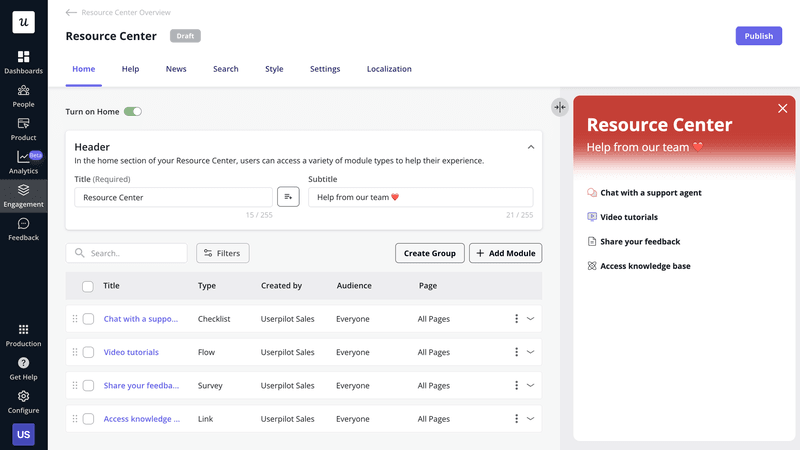
4. Increase customer retention by exceeding customer expectations
As mentioned, when users first join the product, your job is to help them discover and adopt the core features. That’s what they need to start using the product.
However, the basic functionality may not be enough to retain customers over a longer time. They normally don’t differentiate your product from competitors. Or don’t allow users to realize full product potential.
Solution? You need to introduce more complex features as soon as they’re ready.
Secondary onboarding uses the same tactics and tools as primary onboarding. Like walkthroughs, tooltips, tutorials, or demos.
5. Deliver additional value to customers with webinars
Webinars are particularly effective at driving customer retention.
They are interactive events so they keep users engaged. They also create a sense of community among participants.
Most importantly, they show customers new ways to use the product to advance their objectives. This translates into more satisfied customers.
It doesn’t stop there.
Webinars can attract prospective customers. For example, someone trying to learn how to recognize purchase triggers might subscribe to our webinar after finding it on LinkedIn. And that’s how they discover our product as a tool for the job.
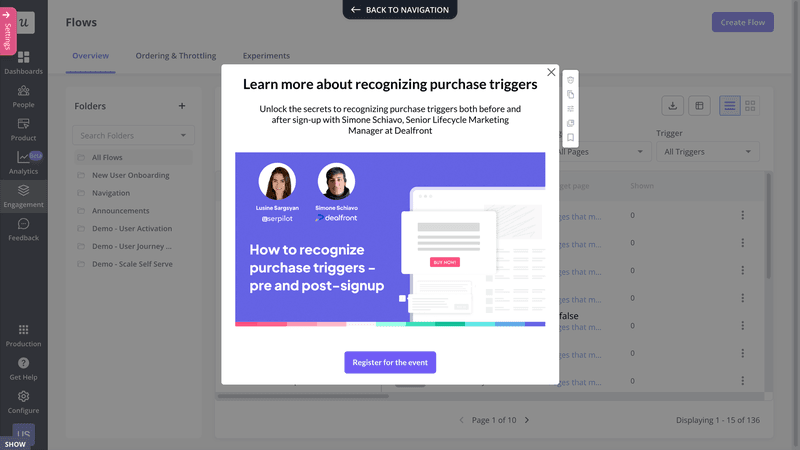
6. Collect and act on customer feedback to improve customer satisfaction
Customer feedback is essential to improve the customer experience. And customer retention rates. And the best part is that the more satisfied and engaged your users are, the more likely they are to volunteer valuable insights.
What’s the best way to collect customer feedback? There isn’t one.
All methods have their strengths and limitations.
For example, in-app surveys have higher response rates and you can use them at scale. But you can’t use them to reach inactive users and they often lack the depth of interviews.
So? Use the whole spectrum of tactics, depending on your needs. For example, follow up on in-app surveys with interviews to further explore some customer responses.

7. Retain customers with a proactive approach
When users provide negative feedback, it’s often too late to retain them.
So don’t wait for it. Engage them proactively to prevent churn.
Here’s how:
Analyze the behavior of churned users. For example, path analysis enables you to visualize all their actions before they churn.
That’s how you can identify friction points in the customer journey or events leading to churn.
With such insights, create in-app experiences that help future users use the product more successfully.
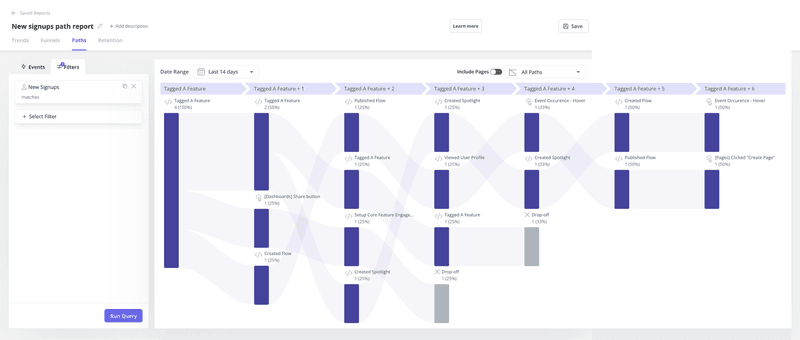
8. Start loyalty programs to increase the number of loyal customers
If your product satisfies user needs and they can see your commitment to constant improvement, their loyalty grows organically.
But it doesn’t mean you can’t help it.
You can do it by setting up referral programs that reward users for recommending the product. Or points systems and loyalty programs with benefits and prizes for their continuing engagement. Like early access to new features, discounts, or extra credits.
Variable rewards are particularly effective at keeping users engaged. That’s when they know the reward is coming but not when or what to do, to get it.
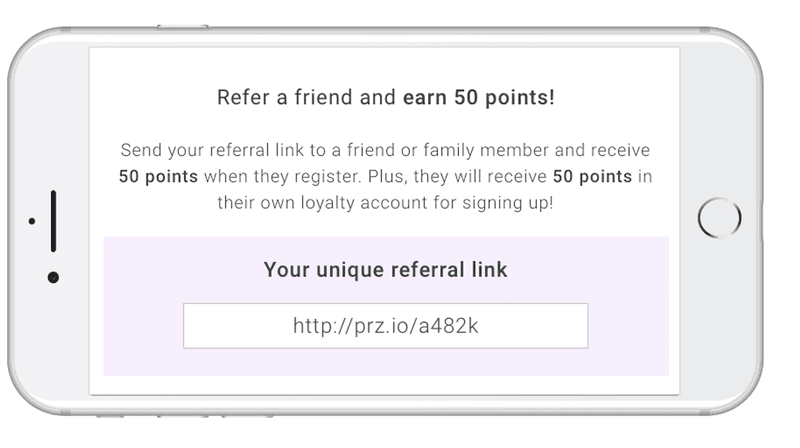
9. Monitor customer behavior to spot negative trends
By tracking user behavior, you can pick up negative trends that lead to churn. Or correlations between retention metrics and user actions.
For example, if a feature adoption or usage drops, your onboarding may not be adequate anymore.
How do you act on such findings?
First, conduct a more in-depth analysis and collect feedback to get to the bottom of the issue. Once you know what’s behind the negative trend, implement appropriate strategies.
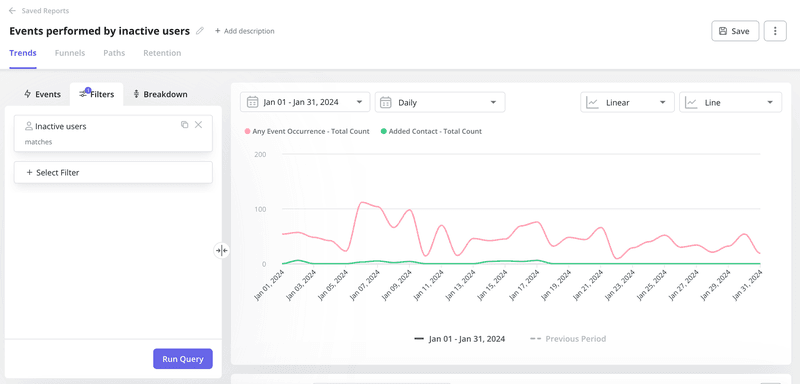
10. Boost customer retention with an omnichannel customer experience
Your app isn’t the only touchpoint in the customer journey. Users interact with your brand across multiple channels. Like email, social media, or PPC ads.
This comes with its consequences. And opportunities.
On the one hand, you need to make the customer experience consistent across all channels. For example, by ensuring that users get the same message and that it’s conveyed in the same style and tone of voice.
On the other, having multiple ways to reach your customers helps you get the message across. For example, you can use social media to build hype around new features before the launch, in-app messages to announce their release, and back it up with emails to ensure that nobody misses it.
Conclusion
Businesses cannot ignore customer retention if they’re serious about growing their customer bases, profits, and survival.
To increase it, companies need to focus on satisfying user needs and keeping them constantly engaged. This enhances customer satisfaction and loyalty.
If you’d like to learn how Userpilot can help you improve your customer retention rates, book the demo!



